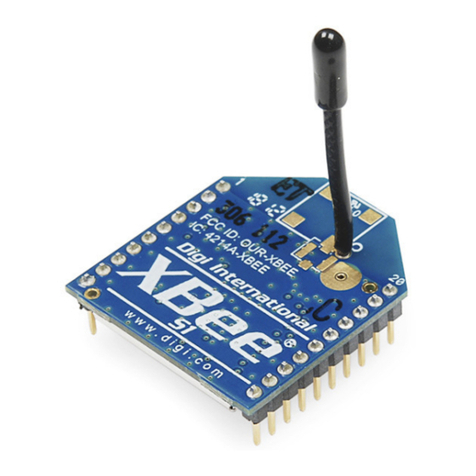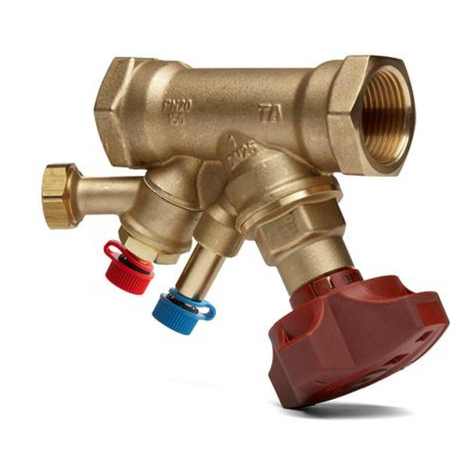Industrial Climate Engineering MiniPac ECUA06ACA A2 Series Specification sheet

MiniPac™
Environmental Control Unit
Operation and Installation Manual
Part No. 01725 7/2014 new
Manufactured By:
Industrial Climate Engineering™Division of AIRXCEL™, Inc.
P.O. Box 5104 • Cordele, Georgia 31010-5104
2002 Hoover St. • Cordele, Georgia 31015
Models ECUA06ACAxxxA2, A3, & A5
ECUA06ACxxxA3 ECUA06ACxxxA5

2 ECUA06 7/2014 new
How To Use This Manual
This manual contains installation, troubleshooting, maintenance, warranty and application information. The information
contained in this manual is to be used by the installer as a guide only. This manual does not supersede or circumvent any
applicable national or local codes.
If you are installing the ECUA06, rst read Chapter 1 and scan the entire manual before beginning the installation. Chapter
1 contains general, descriptive information and provides an overview which can speed up the installation process and
simplify troubleshooting.
If a malfunction occurs, follow this troubleshooting sequence:
1. Make sure you understand how the unit works (Chapter 1.1 - 1.4)
2. Identify and correct installation errors (Chapter 1.5 - 1.8)
3. Refer to the troubleshooting information in Chapter 2.
If you are still unable to correct the problem, contact the Factory Technical Service Department for additional
assistance.
Please read the following “Important Safety Precautions” before beginning any work. Failure to follow these rules may
result in death, serious bodily harm, property damage and damage to the equipment.
Important Safety Precautions
1. USE CARE when LIFTING or TRANSPORTING equipment.
2. TRANSPORT the UNIT UPRIGHT. Laying it down on its side may cause oil to leave the compressor, resulting in
DAMAGE upon START-UP. The MiniPac™ ECU must be upright at least 24 hours prior to start-up.
3. TURN ELECTRICAL POWER OFF AT THE breaker or fuse box BEFORE installing or working on the equipment.
LINE VOLTAGES ARE HAZARDOUS or LETHAL.
4. OBSERVE and COMPLY with ALL applicable PLUMBING, ELECTRICAL, and BUILDING CODES and ordi-
nances.
5. SERVICE may be performed ONLY by QUALIFIED and EXPERIENCED PERSONS.
* Wear safety goggles when servicing the refrigeration circuit
* Beware of hot surfaces on refrigerant circuit components
* Beware of sharp edges on sheet metal components
* Use care when recovering or adding refrigerant
6. Use COMMON SENSE - BE SAFETY-CONSCIOUS
This is the safety alert symbol . When you see this symbol on the ComPac unit and in the instruction manuals be alert
to the potential for personal injury. Understand the signal word DANGER, WARNING and CAUTION. These
words are used to identify levels of the seriousness of the hazard.
Failure to comply will result in death or severe personal injury and/or property damage.
Failure to comply could result in death or severe personal injury and/or property damage.
Failure to comply could result in minor personal injury and/or property damage.
IMPORTANT is used to point out helpful suggestions that will result in improved installation, reliability or operation.
© 7/2014 Industrial Climate Engineering™Div. Airxcel™, Inc.
SPECIFICATIONS SUBJECT TO CHANGE WITHOUT NOTICE.
!DANGER
!WARNING
!CAUTION

3 ECUA06 7/2014 new
Table of Contents
Chapter 1 Description & Specications
1.1 General Description .................................................................................................................................4
1.2 Function/Description of Major Refrigeration Components ....................................................................4
1.3 Function/Description of Major Control Board Components ...................................................................6
1.4 Electronic Control Board Mode of Operation..........................................................................................7
1.5 Installation................................................................................................................................................9
1.6 Pre-Installation Testing ............................................................................................................................9
1.7 Mounting the ECU ...................................................................................................................................9
1.8 Start-up and Check Out..........................................................................................................................10
1.9 Ratings, Wiring and Identication .........................................................................................................11
1.10 Internal Thermostat Operating Instructions ...........................................................................................15
Chapter 2 Troubleshooting
2.1 Overview ................................................................................................................................................2 1
2.2 Failure Symptoms Guide........................................................................................................................21
2.3 Compressor Troubleshooting .................................................................................................................23
2.4 Control Board Diagnosis........................................................................................................................23
Chapter 3 Maintenance
3.1 Scheduled Maintenance .........................................................................................................................24
Chapter 4 Warranty
4.1 Limited Warranty ...................................................................................................................................25
WARNING
• If the information in these instructions are not followed exactly, a re may result
causing property damage, personal injury or loss of life.
• Read all instructions carefully prior to beginning the installation. Do not begin
installation if you do not understand any of the instructions.
• Improper installation, adjustment, alteration, service or maintenance can cause
property damage, personal injury or loss of life.
• Installation and service must be performed by a qualied installer or service agency in
accordance with these instructions and in compliance with all codes and requirements
of authorities having jurisdiction.
INSTALLER: Afx the instructions on the inside of the building adjacent to the
thermostat.
END USER: Retain these instructions for future reference.

4 ECUA06 7/2014 new
1.1 General Description
The ECUA06 Environmental Control Unit (ECU) is specically designed to cool and heat electronic
cabinets. It is designed to mount either on an exterior wall or door.
The units are typically controlled by a thermostat placed inside the cabinet (an optional internal thermostat
is available). If the interior shelter temperature rises above the thermostat cooling set point, the unit
enters the cooling mode. If the shelter temperature falls below the heating set point and the unit has
electric heat, the unit enters the heating mode.
Cooling is provided by a conventional vapor compression refrigeration circuit. Heating is provided by
electric resistance heat (optional).
In the cooling mode, low pressure, cool refrigerant gas enters the compressor and is compressed to a
high pressure, high temperature gas. This gas enters the tubes of the condenser coil where it gives up
energy (heat) to cooler ambient air passing over the ns of the condenser coil. This heat transfer process
condenses the gas to a warm, high pressure liquid. The liquid ows through the capillary tubes where
it changes state to a low pressure, cold liquid/vapor combination (~85% liquid.) This mixture goes
through the distributor where it is homogenized and then ows through the tubes of the evaporator coil
where it picks up heat from warmer cabinet air owing over the ns of the coil. In this process, the
cabinet air is cooled and the refrigerant is evaporated to a low pressure cool vapor which now enters
the compressor to repeat the cycle.
In the heating mode, the electric resistance heater (optional) is energized while cabinet air is blown
through the heater and back into the shelter by the evaporator blower. In the heating mode, the
refrigeration circuit is inactive.
1.2 Function/Description of Major Refrigeration Components
Following is a brief summary of the description and function of the components:
Compressor
• Compresses low pressure, cool refrigerant vapor to high pressure, high temperature refrigerant
vapor.
• Rotary.
• Hermetic.
• External temperature/current overload attached to top of outer casing.
Suction Accumulator
• Comes attached to compressor.
• Prevents liquid refrigerant from entering compressor too quickly.
Condenser Coil
• Heat exchanger which rejects heat from hot refrigerant gas in condenser tubes to ambient air. Gas
is condensed to a liquid.
• Copper tubes, aluminum ns.
• Ried tubing, lanced ns.
Condenser Blower Control Switch (CBC)
• The condenser blower control switch permits cooling when outdoor temperatures are low. The
control uses a reverse-acting high pressure switch to cycle the condenser blower motor according
Chapter 1 Description & Specications

5 ECUA06 7/2014 new
to the liquid pressure conditions. The condenser blower always turns on after the compressor and
will cycle frequently during normal operation at low temperatures.
• Condenser motor powered directly through this switch.
• Circuit closes (motor on) at ~400 psi and opens (motor off) at ~245 psi.
• Located in condenser liquid line.
Access Valve
• Port used in service work to sense refrigerant pressures and to add or remove refrigerant.
• Valves are located both in high pressure (discharge) line and low pressure (suction) line.
• 1/4” male are.
• Automatically closes when test/charging hoses are removed.
• Valve is opened by depressor located in end of test/charging hose.
• Has additional seal cap with “O” ring to prevent leakage.
Filter Drier
• Used to remove contaminants or moisture from refrigerant.
• Located in liquid line.
• Replacement recommended any time sealed refrigeration system is opened for service.
High Pressure Switch (HPS)
• The high pressure switch is mounted on the compressor liquid line. It is electrically connected to
a lockout relay which shuts down the system if the refrigerant pressure rises to 625 PSIG. This
protects the unit if airow through the condenser is blocked or if the outdoor blower motor fails.
Although the contacts of the high pressure switch close when the refrigerant pressure falls to
approximately 450 PSIG, the system must be manually reset once the lockout relay is activated.
A manual reset is necessary to prevent harmful short-cycling. To reset switch, turn primary power
off, then back on or turn thermostat system switch off, then back on.
• Electrically is part of the low voltage control system.
Low Pressure Switch (LPS)
• The low pressure switch is mounted on the compressor suction line. It is designed to open if the
refrigerant pressure drops to 40 PSIG; it resets when the pressure rises to 60 PSIG. The switch
protects the unit if airow through the indoor blower is impeded, if the indoor blower motor fails,
or if there is a loss of refrigerant.
• Electrically is part of the low voltage control system.
Evaporator Coil
• Heat exchanger which transfers heat from cabinet air to cold refrigerant in evaporator tubes.
Refrigerant is evaporated to a gas.
• Copper tubes, aluminum ns.
• Ried tubing, lanced ns.
Condenser Blower and Motor (CBM)
• Single blower used.
• Pulls ambient air through condenser coil and discharges heated air back to ambient.
• Squirrel cage blower design.
• Forward curved blades on wheels.
• Motor drives blower wheel.
• PSC motor design.
• Ball bearings.

6 ECUA06 7/2014 new
Evaporator Blower and Motor (EBM)
• Twin blower and motor.
• Pulls cabinet air through evaporator and discharges cooled air back to cabinet.
• Squirrel cage blower design.
• Blower and motor combination must be replaced as complete unit.
• Shaded pole motor.
Resistance Heater (optional)
• Electric resistance heat to heat cabinet air.
• 1.0 kW @ 240 VAC.
• Located in supply air outlet.
• Nichrome wire.
• High limit thermostat (approximately 145°F) and thermal cut-out safety device.
1.3 Function/Description of Major Control Components
Control Voltage Transformer
• Provides low voltage to control circuits.
• Reduces line voltage (208/230 VAC) to 24 VAC.
• 40 VA power rating.
• Impedance protected.
• Factory wired for 230 VAC operation; if voltage is <220 VAC, wire for 208 VAC.
Compressor Contactor (CC)
• 24 VAC coil.
• Switches compressor and condenser.
• Energized during cooling mode.
Heat Contactor (optional)
• Double pole.
• 24 VAC coil.
• Energized during heating mode.
• Normally open (NO).
High Voltage Terminal Block
• Connection point for main incoming power.
• Two pole.
Ground Screw
• Grounding terminal for main power.
• Connected to high voltage receptacle on side of unit.
Low Voltage Terminal Block
• Connection point for low voltage controls.
• Thermostat, transformer, alarm.
• 10 terminals.
Compressor Capacitor
• Start/run capacitor for PSC (permanent split capacitor) compressor motor.
• 15 µfd, 370 VAC.
• Provides starting torque and improves operating efciency.

7 ECUA06 7/2014 new
Evaporator Blower Motor Capacitor (N3 series only)
• Start/run capacitor for PSC evaporator motor.
• 3 µfd @ 440 VAC.
• Provides starting torque and improves operating efciency.
• Built into the 115V motor, separate on 230V motor.
Condenser Blower Motor Capacitor
• Start/run capacitor for PSC (permanent split capacitor) condenser motor.
• Provides starting torque and improves operating efciency.
1.4 Electronic Control Board Mode of Operation
Normal
24 VAC power must be continuously applied to “R” and “C”. Upon a call for cooling “Y” and with
the high pressure switch (HPS) closed, the compressor will be energized. (Note: See the delay on
make feature.) The compressor will remain energized during the 3 minute timed low pressure by-pass
cycle. If the low pressure switch (LPS) is open after the 3 minute by-pass cycle, the compressor will
de-energize.
Lock-out
If either of the fault conditions (LPS or HPS) occurs twice, the control board will enter into and indicate
the lockout mode. In the lockout mode, the compressor is turned off. If there is a call for indoor air
ow “G”, the blower remains energized, the alarm output is energized and the status led will blink
to indicate which fault has occurred. When the lockout condition is cleared, the unit will reset if the
demand for the thermostat is removed or when the power is reset. With the control board, the user can
now have either normally closed or normally open contacts by moving a wire on the control board.
The ComPac®air conditioners are factory wired to be normally open.
Delay on Break
If the compressor is de-energized due to a loss of a cooling “Y” call or the rst fault, the unit re-start
will be delayed 3 minutes from the time the contactor is de-energized. (Note: There is no delay on
break if the lockout condition is reset.)
Delay on Make
On initial power up only, the unit will wait 0.03 to 10 minutes from the cooling “Y” call before al-
lowing the contactor to energize. The delay can be adjusted by the DOM wheel on the board. Factory
recommended wait is 3 minutes.
Low Pressure By-Pass Time
When starting, the low pressure switch (LPS) fault condition will be by-passed for 3 minutes before
the contactor is de-energized.
Post Purge
Upon a call for indoor airow “G” the blower will energize immediately. When in the cooling mode,
the blower will remain energized for 10 to 90 seconds (adjustable) after the compressor has been
de-energized. The time period can be changed by fan purge wheel on the board. Factory setting is 90
seconds.

8 ECUA06 7/2014 new
Low Ambient Control
The low ambient control permits cooling when outdoor ambient temperatures are low. The control
uses a reverse-acting high pressure switch to cycle the condenser fan motor according to liquid refrig-
erant pressure conditions. Switch closure and fan operation occurs when the pressure reaches 400
PSIG. The switch opens again when the refrigerant pressure falls to 245 PSIG. Therefore, the outdoor
fan always starts after the compressor, and it will cycle frequently during normal operation at low
outdoor conditions.
High Pressure Switch
The high pressure switch is mounted on the compressor liquid line. It is electrically connected to a
lockout relay which shuts down the system if the refrigerant pressure rises to 625 PSIG. This protects
the unit if airow through the condenser is blocked or if the outdoor fan motor fails.
Although the contacts of the high pressure switch close when the refrigerant pressure falls to approxi-
mately 450 PSIG, the system must be manually reset once the lockout relay is activated. A manual
reset is necessary to prevent harmful short-cycling. To reset switch, turn primary power off, then back
on or turn thermostat system switch off, then back on.
Low Pressure Switch
The low pressure switch is mounted on the compressor suction line. It is designed to open if the re-
frigerant pressure drops to 40 PSIG; it resets when the pressure rises to 60 PSIG. The switch protects
the unit if airow through the indoor blower is impeded, if the blower motor fails, or if there is a loss
of refrigerant.
COLOR TYPE STATUS DESCRIPTION
Green Power Constant On 24 VAC power has been applied
Red Status Constant On Normal operation
Red Status 1 Blink High pressure switch has opened twice
Red Status 2 Blinks Low pressure switch has opened twice
Red Status 3 Blinks Frost sensor has opened twice
LED Indicator Lights
LEDs
POST PURGE
WHEEL
DELAY ON MAKE
(COMPRESSOR TIME DELAY)
WHEEL

9 ECUA06 7/2014 new
1.5 Installation
Equipment Inspection
Inspect all cartons and packages upon receipt for damage in transit. Remove cartons and check for
concealed damage. Important: Keep the unit upright at all times. Inspect refrigerant circuit for fractures
or breaks. The presence of refrigerant oil usually indicates a rupture. If damage is apparent, immediately
le a claim with the freight carrier.
Units that have been turned on their sides or tops may have concealed damage to compressor motor
mounts or to the oil system. If the unit is not upright, immediately le a claim for concealed damages
and follow these steps:
1. Set unit upright and allow to stand for 24 hours with primary power turned on.
2. Attempt to start the compressor after 24 hours.
3. If the compressor will not start, makes excessive noise or will not pump, return the unit to the freight
carrier.
Installation Requirements
1. Inspect unit for completeness. Check for missing parts (e.g. hardware).
2. Remove access panels and check for loose wires. Tighten screw connections.
3. Complete and mail the warranty registration card.
1.6 Pre-Installation Testing
The ECU may be operated prior to mounting on the cabinet.
1. The ECU must be upright in the proper mounting position for at least 24 hours prior to starting.
Failure to do this will cause permanent damage to the refrigerant system.
2. Turn power off. Attach 208/230V, 1 phase, 60 Hz power to the L1 and L2 terminals in the Control
Box. Jump terminals 10 to 1 on Low Voltage Terminal Strip. Set Compressor Time Delay to
minimum position. Turn power on to the unit. The evaporator blowers should be blowing air and
the compressor should be operating. However, the condenser blower will not turn on until there is
sufcient refrigerant pressure. The evaporator coil air should be approximately 15°F to 20°F (8°C
to 11°C) cooler than the ambient air. If the unit does not come on, check to make sure that unit has
power.
After unit has operated for ve to ten minutes, remove power and jumpers, and proceed to mounting
of the ECU.
1.7 Mounting of the ECU
1. The unit has internal mounting holes and a bottom bracket. See drawing for location of all holes
and cutouts for return and supply air. The return air opening must be at least one square foot.
2. Making sure that cutouts do not interfere with components inside your cabinet, cut the holes in the
cabinet door or wall for the return and supply air. Proper alignment of return and supply openings
is essential for proper cooling of the ECU.
WARNING
Failure to observe and follow Warnings and Cautions and these Instructions could result in
death, bodily injury or property damage. Read this manual and follow its instructions and
adhere to all Cautions and Warnings in the manual and on the ICE unit.

10 ECUA06 7/2014 new
3. If the unit is mounted outside, a small bead of silicone should be applied to the perimeter.Additionally,
weather ashing should be installed over the top rear edge.
4. Place ECU on cabinet and attach to cabinet with high strength mounting screws. Use all holes to
ensure stability and a tight seal.
5. Route condensate tube to outside of the cabinet. The condensate tube must not be higher than the
bottom of the ECU.
IMPORTANT: The unit weighs 85 pounds. If the unit is installed to the cabinet door, make certain that
the door and hinge can support the weight of the ECU.
1.8 Start-Up and Check-Out
Cooling Test
Turn power off to the unit. Before checking unit in cooling mode, ensure all high and low voltage wiring
is correct and secure. Remove front panel/door and turn the time delay to “min”, fully counterclockwise.
Next apply power to unit and observe temperature reading on digital thermostat. Using instructions
found in Section 1.10, set thermostat to cooling mode (stage 1 set to”CI”); i.e., if room temperature is
72°F (22°C), set thermostat at 60°F (15°C). Replace the front panel. Failure to replace the front panel
will result in unit failing on “freeze stat” operation. Unit will now run in cooling. The condenser blower
will NOT come on immediately, but may, depending on temperature/humidity conditions, cycle on and
off or run continuously. After a run period of ve minutes, a temperature difference of approximately
20°F (11°C) should be felt between the supply and return air. The actual temperature difference varies
with outdoor temperature and indoor conditions. After completing test, ensure temperature set points
are returned to customer requirements and time delay is set back to 5 minutes.
Heating Test (if applicable)
Before checking unit in heating mode ensure all high and low voltage wiring is correct and secure.
Remove front panel/door and locate the digital thermostat. Note: Only applies to units with internal
thermostats. Now, apply power to the unit and, referring to set-up instructions in Chapter 1, make sure
the thermostat is set so it is NOT calling for cooling, i.e., no “S1” indicator is showing. Next, set “S2”
in the heating mode to call for heat; i.e., if room temperature is 72°F (22°C), set “H2” set point at 85°F
(29°C0. Replace front/door panel. The unit’s supply blower and electric heat should now be operational.
Quickly, a difference between the supply and return air of approximately 20°F (11°C) at 208V and
25°F (14°C) at 240V should be measured. The unit will NOT run in the heating mode if the digital
thermostat is showing a “S1” set signal; i.e., cooling. After completing test, remove front panel/door
and return the set points on the thermostat to customer requirements.
Terminal Functions
1. Compressor
2. Not Used
3. Not Used
4. Electric Heat
5. Lock-Out Relay Signal (normally open)
6. Not Used
7. Lock-Our Relay Signal (common)
8. Not Used
9. 24 VAC Common
10. 24 VAC

11 ECUA06 7/2014 new
1.9 Ratings, Wiring and Identication
Summary Ratings
Unit Load Amps
BASIC
MODEL
NUMBER
VOLTAGE
PHASE
HERTZ
CURRENT
AMPS
LOAD OF RESISTIVE HEATING ELEMENTS ONLY
(AMPS)
TOTAL MAXIMUM HEATING AMPS (STANDARD
UNIT)
AC IBM 0.5 kW 1.0 kW 2.2 kW 3.6 kW 0.5 kW 1.0 kW 2.2 kW 3.6 kW
ECUA06ACA (A) 208-230/1/60 5.15 0.60 2.10 4.20 n/a n/a 2.70 4.80 n/a n/a
IBM = Indoor Blower Motor
Electrical Characteristics
BASIC
MODEL
COMPRESSOR OUTDOOR FAN MOTOR INDOOR FAN MOTOR
TYPE VOLTS RLA LRA MCC VOLTS RPM FLA HP VOLTS RPM FLA HP
ECUA06ACA (A) Rotary 208/230-60-1 3.7 22.2 5.8 208/230-60-1 1430 0.85 1/10 208/230-60-1 1210 0.60 1/10
RLA = Rated Load Amps LRA = Locked Rotor Amps MCC = Maximum Continuous Current FLA = Full Load Amps
RPM = Revolutions per Minute HP = Horse Power
ECU A 06 AC A ••• ••
Environmental
Control
Unit
Nominal Cooling
06 = 6,000 BTUH
System Type
Air Conditioner
Power Supply
A = 208/230V,1ø,60Hz
Electric Heat – kW
000 = No Heat
010 = 1.0 kW
Refrigerant
A = R410A
Model Identication
Series
A2 = Series No. 2
A3 = Series No. 3
A5 = Series No. 5
ELECT. HEAT 000 = None 005 = 0.5 kW 010 = 1.0 kW 022 = 2.2 kW 036 = 3.6 kW
BASIC VOLTAGE CKT #1 CKT #1 CKT #1 CKT #1 CKT #1
MODEL PHASE / HZ MCA MFS MCA MFS MCA MFS MCA MFS MCA MFS
ECUA06ACA (A) 208-230/1/60 6.1 15 6.1 15 6.1 15 n/a n/a n/a n/a
MCA = Minimum Circuit Ampacity (Wire Size Amps).
MFS = Maximum Fuse Size or HACR circuit breaker.

12 ECUA06 7/2014 new
Figure 2. MiniPac™ ECUA06 A2 & A3 Series Schematic

13 ECUA06 7/2014 new
Figure 3a. MiniPac™ ECUA06 A2 Series Dimensional Data
FRONT
LEFT SIDE
BACK
Figure 3b. MiniPac™ ECUA06 A3 Series Dimensional Data

14 ECUA06 7/2014 new
Figure 3c. MiniPac™ ECUA06 A5 Series Dimensional Data
SUPPORT POINTS
SUPPORT POINTS
TOP

15 ECUA06 7/2014 new
1.10 Internal Thermostat Operating Instructions

16 ECUA06 7/2014 new

17 ECUA06 7/2014 new

18 ECUA06 7/2014 new

19 ECUA06 7/2014 new

20 ECUA06 7/2014 new
This manual suits for next models
2
Table of contents
Popular Control Unit manuals by other brands

Burkert
Burkert Robolux 2036 quick start
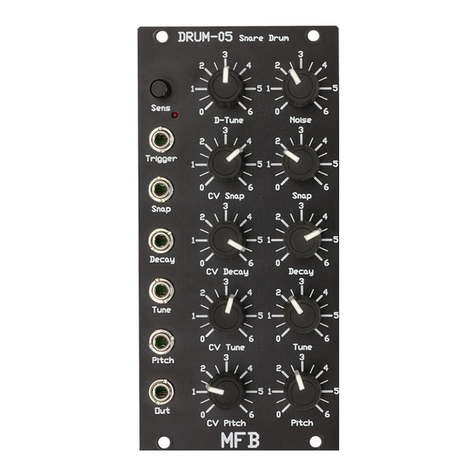
MFB
MFB DRUM-05 operating manual

Skipper
Skipper SB-100-SA Installation and operation manual

Matrix Orbital
Matrix Orbital LK202-25 Technical manual
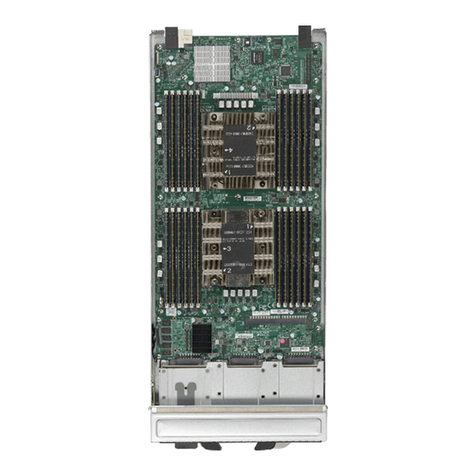
Supermicro
Supermicro SBI-6119P-C3N user manual
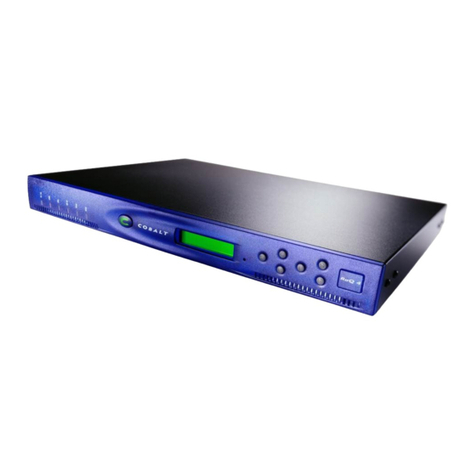
Sun Microsystems
Sun Microsystems Sun Cobalt Control Station Maintaining and Upgrading the Hardware
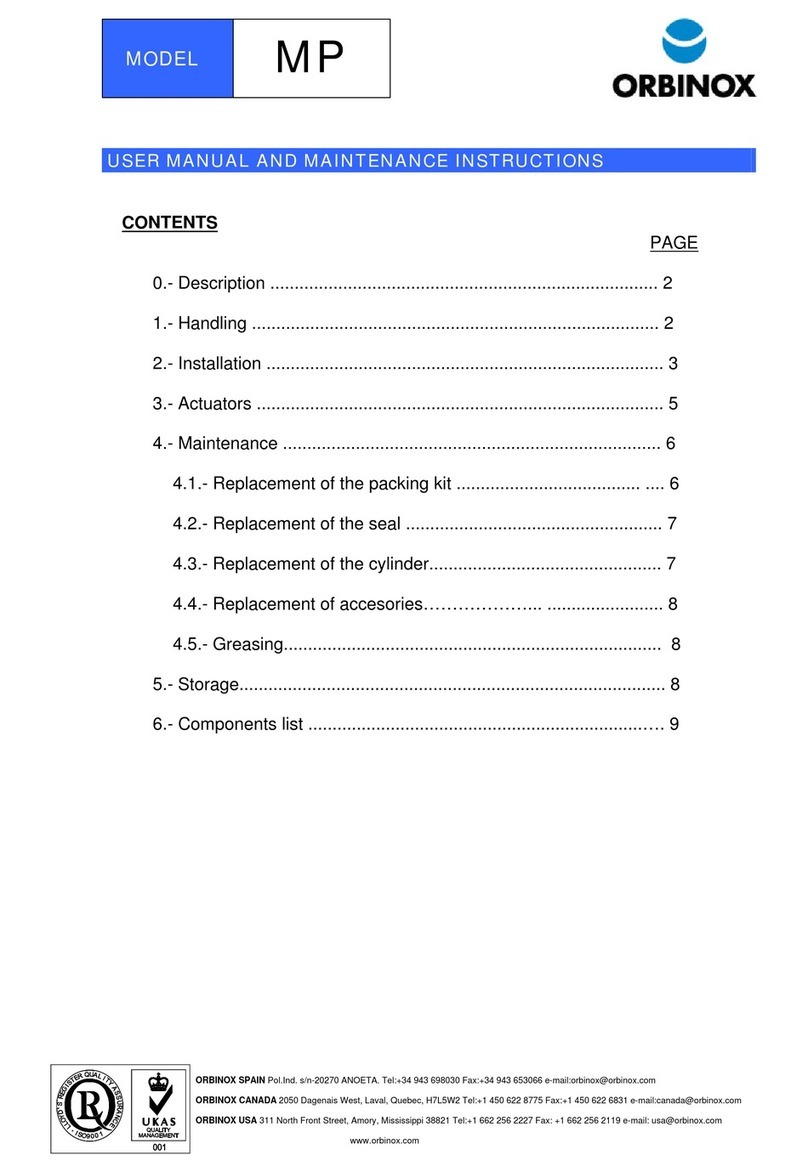
Orbinox
Orbinox MP User's manual and maintenance guide
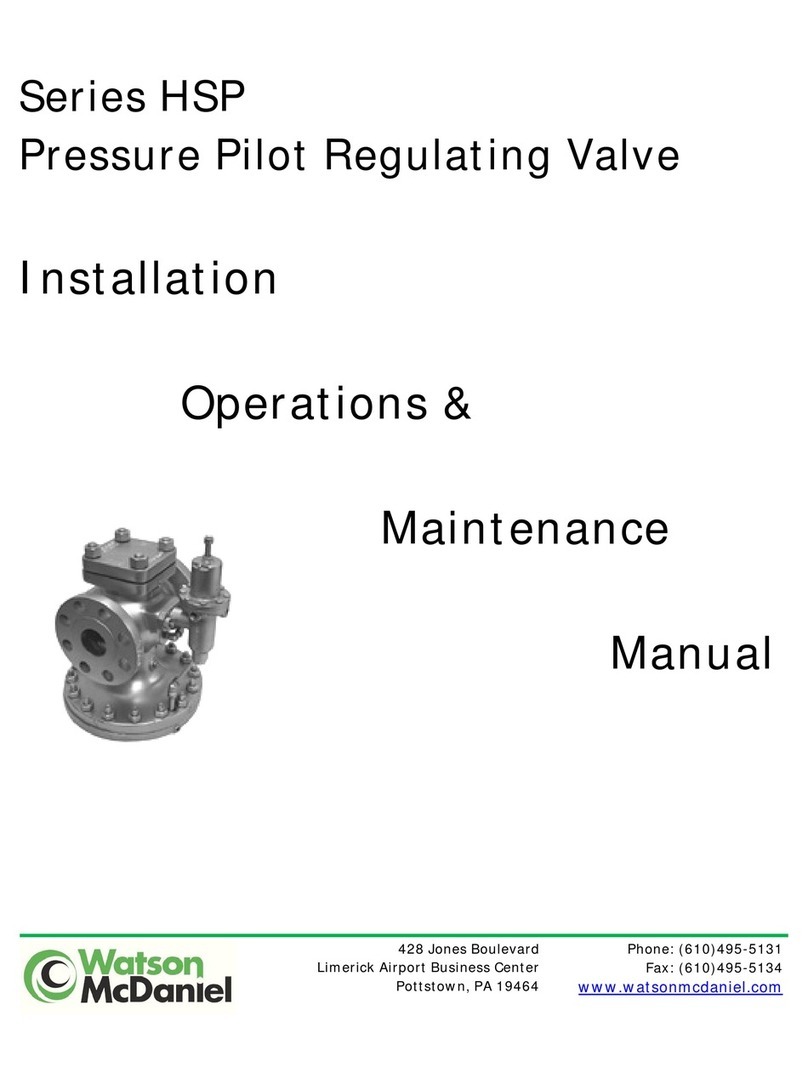
Watson McDaniel
Watson McDaniel HSP Series Installation & maintenance manual
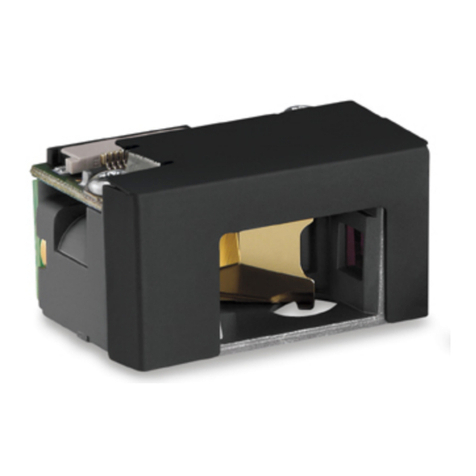
Motorola
Motorola SE955 Integration guide
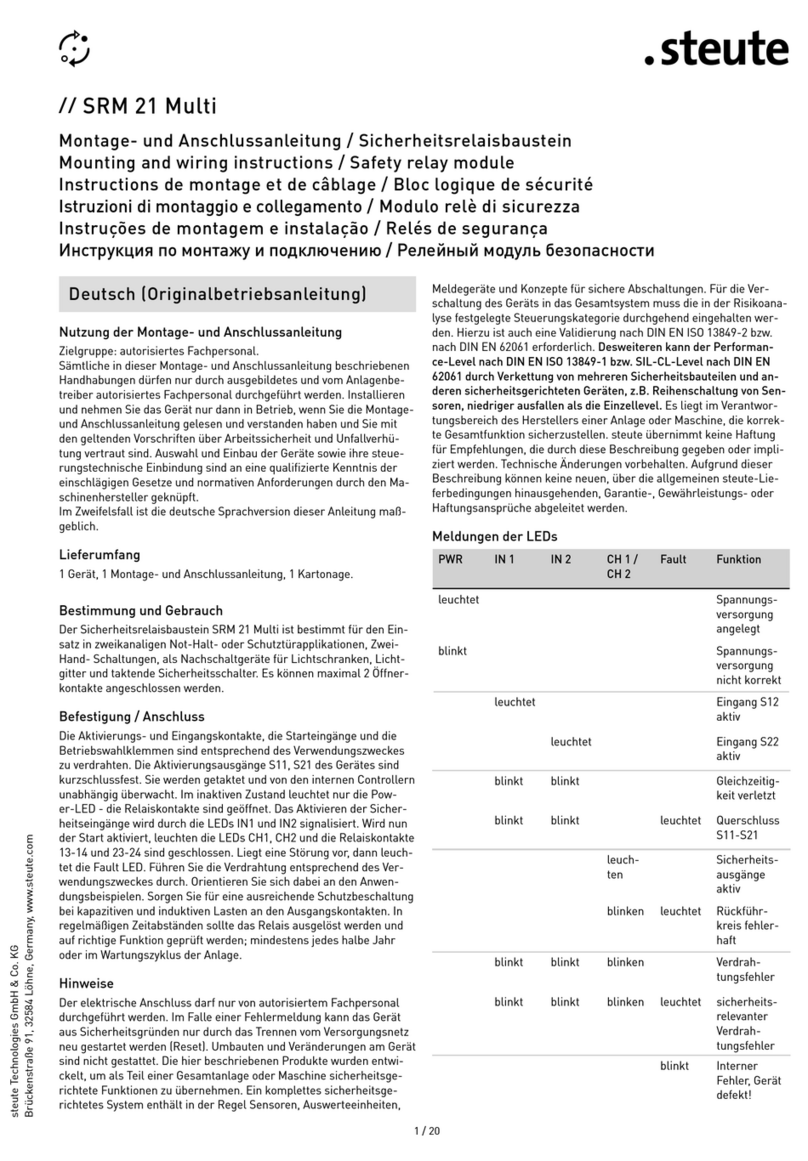
steute
steute SRM 21 Multi Mounting and wiring instructions

TECO
TECO Tecomat Foxtrot OS-1401 Basic documentation
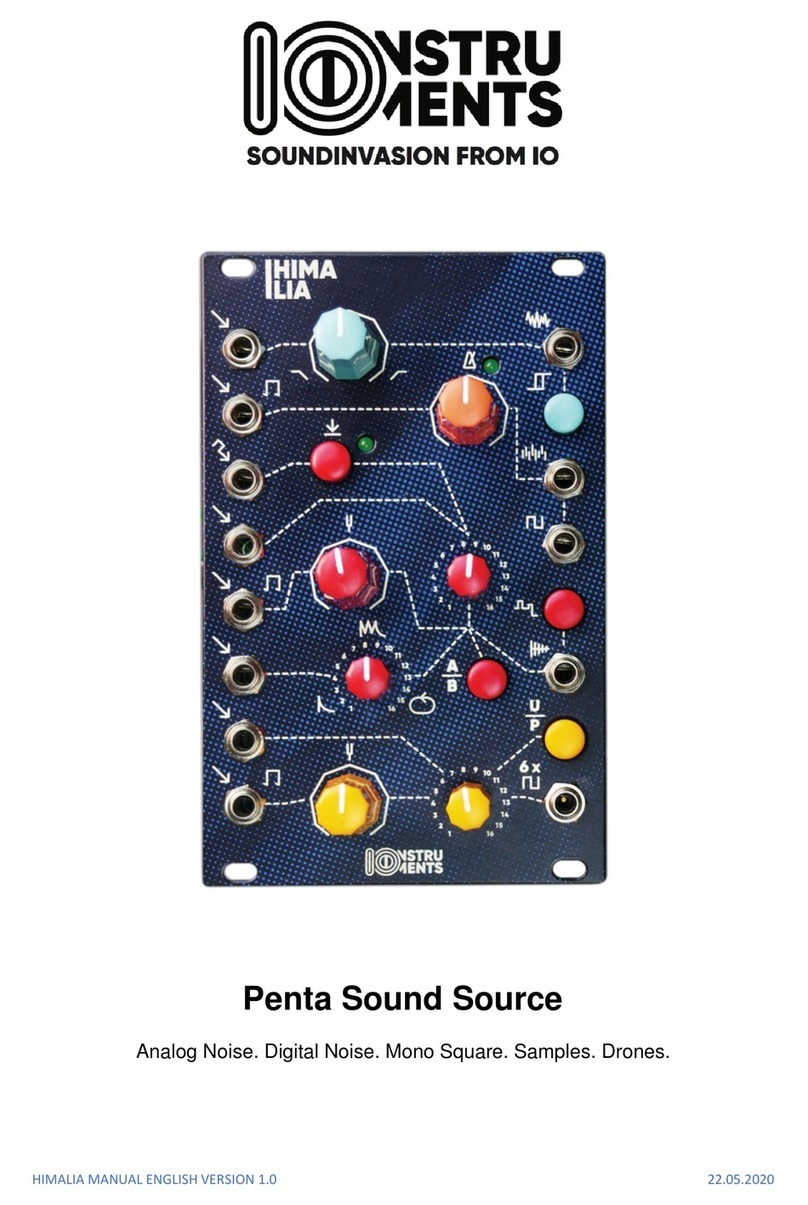
IO Instruments
IO Instruments HIMALAI manual

